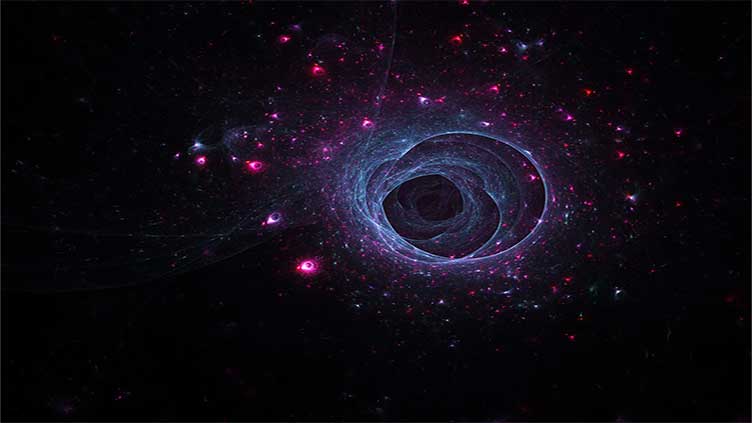A giant, mysterious ring in space leaves scientists flabbergasted

Technology
One of our fundamental assumptions about universe says the big ring shouldn't exist —but there it is
(Web Desk) - In deep space, some 9.2 billion light-years from Earth, there lies a gigantic, mysterious structure that, according to some of the basic principles of theories of the universe, shouldn't exist.
But in a discovery recently detailed at the annual American Astronomical Society meeting, University of Central Lancashire PhD student Alexia Lopez showed that not only is this huge structure there, it is in the same area of the universe as another ultra-large and mysterious structure that also defies explanation.
Lopez' discovery has been dubbed the Big Ring (although it is actually shaped more like a coil). While not a precise sphere, it is about 1.3 billion light-years in diameter and 4 billion light-years in circumference.
Lopez found it in the same area as her previous discovery, the Giant Arc, which is 3.3 billion-light years across.
"Neither of these two ultra-large structures is easy to explain in our current understanding of the universe," Lopez said in a statement.
"And their ultra-large sizes, distinctive shapes, and cosmological proximity must surely be telling us something important —but what exactly?"
The Big Ring is particularly confusing because it challenges the Cosmological Principle, a foundational assumption in science which states that the laws of physics are the same here on Earth as they are elsewhere in the universe.
In other words, the parts of the universe we can see from our vantage point on Earth are likely to look more or less the same as those we can't see.
But that principle breaks down when you find two ultra-large structures in much the same place in the universe: They shouldn't exist, according to our understanding of physics.
Current theories suggest chains of galaxies have a size limit of about 1.2 billion light-years. But the Giant Arc and the Big Ring are far beyond that limit.
"From current cosmological theories we didn't think structures on this scale were possible," Lopez said.
"We could expect maybe one exceedingly large structure in all our observable universe. Yet, the Big Ring and the Giant Arc are two huge structures and are even cosmological neighbors, which is extraordinarily fascinating."
So how can not one, but two huge structures that break our understanding of the universe both exist in the same place, when neither should exist at all?
It's possible that a theory of the universe called Conformal Cyclic Cosmology could help explain the Giant Arc and the Big Ring. This theory, proposed by Nobel-prize winning physicist Roger Penrose, suggests that the universe is on an infinite rinse and repeat cycle —and the Big Ring could be an imprint of the Giant Arc, or vice versa— like a stain that is near impossible to remove.
It will take many more observations to try and grapple with these questions, however —and possibly give rise to new physics.
"Identifying two extraordinary ultra-large structures in such close configuration raises the possibility that together they form an even more extraordinary cosmological system," Lopez said.



